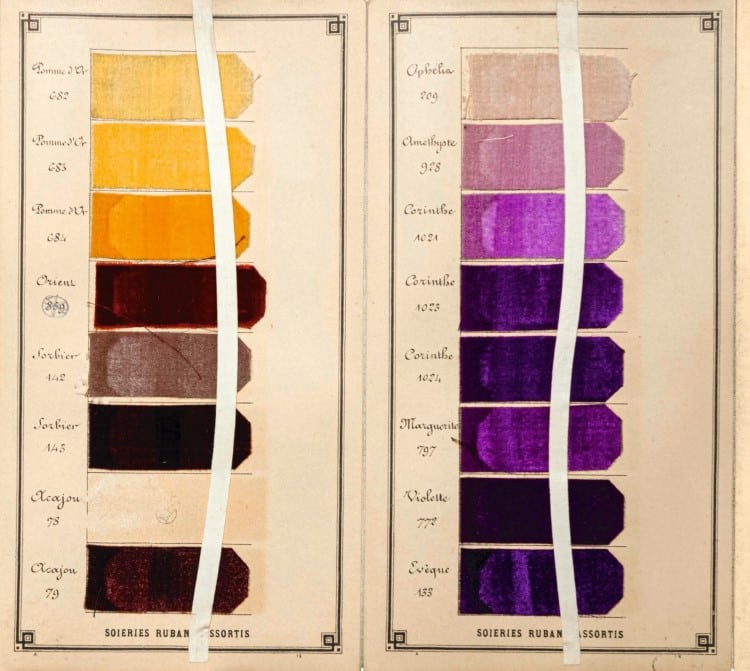Community, Leadership, Experimentation, Diversity, & Education
Pittsburgh Arts, Regional Theatre, New Work, Producing, Copyright, Labor Unions,
New Products, Coping Skills, J-O-Bs...
Theatre industry news, University & School of Drama Announcements, plus occasional course support for
Carnegie Mellon School of Drama Faculty, Staff, Students, and Alumni.
CMU School of Drama
Monday, February 26, 2024
Massive Book Explores The Vibrant History of How We Catalog Color
mymodernmet.com: We all know how important color is to our world. And a new book pays homage to the different ways that it can be arranged, presented, and preserved. Color Charts is an incredible journey through the different devices that have been developed since the 15th century to help us organize and catalog color. Color theory enthusiasts will marvel at the opportunity to view nearly 200 diverse color charts, many of which were previously unpublished.
Subscribe to:
Post Comments (Atom)

4 comments:
I think this book sounds great, I would be super interested in reading and looking at it. Color is so precious and sacred. Color can formally be described as the aspect of things that is caused by differing qualities of light being reflected or emitted by them, but color is also a feeling, a person, or a symbol. Color translates so much through a person regarding art. An artist chooses a color for a reason, some artists– like VanGough naturally just have amazing color vision, he has artist instincts that make his art so amazing. By combining yellow ochre with blue he can make something absolutely beautiful with which people resonate with. I think it is important for young people especially to be exposed to color in this way. Many people arent that interested in something that seems classical and traditional like color theory, but for young artists it is necessary to stop and take a look at color and its simple nature. To be someone who sees how colors work together, complement, and shouldn't be mixed, all is crucial to making new great art.
I think it is a massive challenge to try and record how we catagorize color and or view/identify colors. Its impressive to me that someone has comprised ahistory of how we organize or views of color from the 15th century. I would really love to see this book and look at the diverse charts, samples and iagrams they offer. Somewhere in the beginning of the article it mentions that they hve anything from 17th century ribbons from linoleum swatches from the 1960s. I think its really interesting to look at this from an anthropological standpoint. I think it says a lot about humans to see how the choose to catagorize things and describe social norms and or how color fits into them. I think its interesting to see how we like to classify things in order to seel them to people (like the house paint swatches) what we like to say about objects to convince others of their importance and or standing. Overall it sounds like a pretty interesting read.
This semester I took a chance and decided to enroll in a color theory class entitled, Sensing Place Through Color, not because I was particularly fascinated nor a designer, but now I am hooked. It's really quite sad that now I go to pick out an outfit and I think about what color tactic my outfit is today or if my shirt is too saturated to cohesively match my pants. Most of the books I see on color are very modern and engage in color in a very mechanical way, see the immersive experience, The Color Factory. They lean more toward aesthetics than historical color theory. That I think is the reason why I quite enjoyed this article. You could actually see old collections that used collages of materials rather than prints of colors using a machine. I think my favorite example was the photo of the small colored dots on a rainbow-looking chart. It is a way that I haven't thought about cataloging color.
I’ve always found the ways we categorize colors to be very interesting. I have been fascinated by how many colors have names to distinguish them when if it was another color it wouldn’t have a real name. Orange is one of my favorite examples of this for a couple of reasons. For the first reason, orange used to be called red-yellow similar to blue-green and there happened to be a fruit called an orange that was red-yellow. And over time it just renamed the color for most people. And for the second reason, if you make orange darker and darker eventually you get brown which also wouldn’t have a name if it was any other color. It’s like dark blue or dark red. I appreciated this article covering the book, it gave some good insight and I think i would be interested to read it some time if I can
Post a Comment